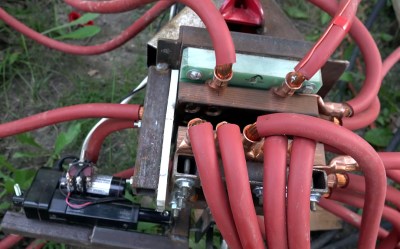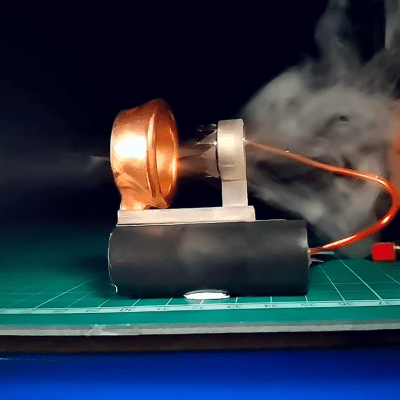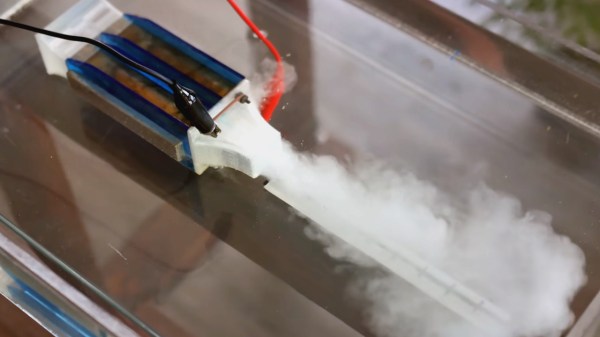For the most part, here at Hackaday we’re more interested in how something was made than the backstory on why an individual actually put it together. Frankly, it’s not really our business. But we’ve been around long enough to know that practicality isn’t always the driving force. Some folks build things because they want to challenge themselves, others because there’s nothing commercially available that quite meets their needs. Of course, there’s another camp that just builds things to look cool.
In the case of the plasma-infused blade [Jay Bowles] recently put together for Plasma Channel, we imagine it was a bit from each column. The basic inspiration was to create something in the style of the “Energy Sword” from Halo, but the resulting electrified blade is no mere prop. Inside the 3D printed enclosure, it packs not only the electronics necessary to produce 20,000 volts from the built-in battery pack, but a fan to help push the resulting plasma down the length of the two-piece steel blade.
 As you might expect, it took a few attempts to get there. In the video after the break, [Jay] shows off the design process and some earlier incarnations of the plasma knife that didn’t quite live up to expectations. While there were always some impressive sparks, the spacing of the blades and the output power of the miniature high-voltage generator both needed fine tuning before it resulted in the band of plasma he was aiming for.
As you might expect, it took a few attempts to get there. In the video after the break, [Jay] shows off the design process and some earlier incarnations of the plasma knife that didn’t quite live up to expectations. While there were always some impressive sparks, the spacing of the blades and the output power of the miniature high-voltage generator both needed fine tuning before it resulted in the band of plasma he was aiming for.
Is there a practical use for such a thing? Well the spark between the blades can apparently be used to light stuff on fire, and of course, you can cut things with it. But realistically…no, not really. It just looks cool, which is fine by us.
Should you prefer your high-voltage experimentation to have a more clearly defined goal, you might be interested in the ongoing work [Jay] has been doing with ionic propulsion and magnetohydrodynamic drives (MHDs).
Continue reading “20,000 Volt Plasma Knife Slices, Dices, And Sparks”



![The nearly final measurement by [Double M Innovations].](https://hackaday.com/wp-content/uploads/2024/01/hv_transmission_line_energy_harvesting_final_count.jpg?w=400)

















